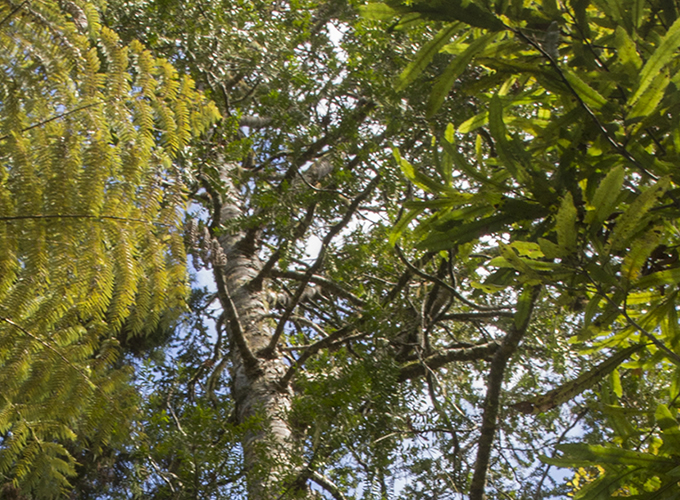New methods help in kauri dieback management
Kauri dieback disease has spread quickly over the past decade, killing thousands of kauri. The Phytophthora agathidicida pathogen was first identified on Great Barrier Island Aotea in 1972, with Manaaki Whenua’s Dr Bevan Weir leading the description of the ‘kauri-killer’.

The pathogen lives in soil and attaches to the trees’ roots, starving them from below. This gives it the appearance of a thinning and yellowing of the crown, and a characteristic over-production of gum at the collar.
The research team, in collaboration with Māori partners, have looked at the fungi and microbes associated with healthy kauri to see if adding beneficial microbes to kauri could help protect the trees against infection - or even help halt the progression of the disease.
Scientists have infected glasshouse seedlings taken from North Island kauri to determine the survival rate and assess whether there is any natural tolerance in the remnant populations.
Infected kauri do not show symptoms of the disease straight away, and in the past it has taken up to a month to test if the pathogen was in the soil. Now scientists can put cedar needles over a flooded soil sample, and if the pathogen is there it swims to the needles. The needles then have DNA extracted and purified, which is analysed using LAMP/isothermal primers. The advantage of this technology is that it is portable, meaning that analysis can be undertaken in the field.
This is a huge step forward for researchers, because knowing where the infections are present helps them determine how the pathogen behaves and where its next target might be. The nature of the test means it can be done without specialist selective agar, and it can be deployed in remote situations because the test unit is linked to smartphones, so results can be issued via email.
The long-term goal is to minimise the impacts of kauri dieback, and to enable mana whenua, conservation staff or landowners to test the soil and make more informed land management decisions on either containment or quarantine.
